2020 Kawasaki STX-15F vs. Sea-Doo GTI 130 vs. Yamaha VX
How do these three sub-$10,000 PWC stack up?
The Kawasaki STX-15F, Sea-Doo GTI 130 and Yamaha VX are all priced under $10,000 and offer different advantages. Which one should you choose?
The $10,000 mark is a significant threshold in the personal watercraft market. Above that price you can get supercharged power, race-ready handling, big and comfortable hulls, and lots of amenities, like cruise control and no-wake modes. Far below that mark you can get some of the best buys in the business, craft that may offer less to keep costs in check and fun at a premium.
Just a step above those bargain models, however, are some truly impressive mid-range models, craft that may not offer flagship speeds but sip fuel, deliver fun and nimble handling, and even surprise with some impressive extras.
Kawasaki’s STX-15F is the most inexpensive (and spoiler alert, fastest!) of these models, a craft that retails for $9,699 but can often be found for significantly less given that it’s technically a leftover model from 2019. Yamaha’s VX lists for $9,899 and offers that company’s trademark handling ability in all water conditions, as well as innovative features like RiDE. Sea-Doo’s GTI 130 comes closest to the 10K threshold at $9,999 but its features list goes on…and on…and on.
How do these three craft compare in the key areas of power, handling and features? And which one’s personality is the best fit for you, family and friends?
Here’s a summary of three of the best buys in the current personal watercraft market.
Power
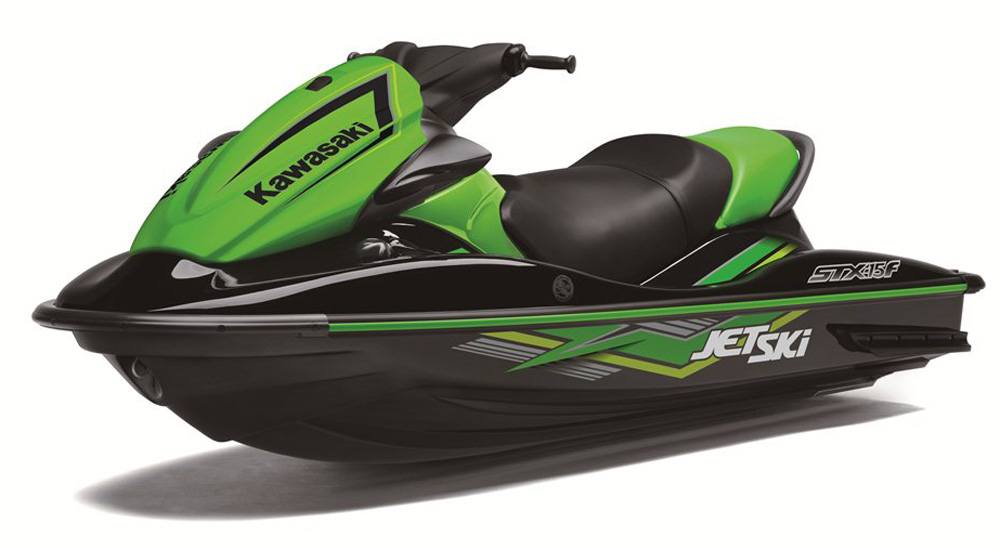
At a legitimate 160 hp, the Kawasaki STX-15F easily claims top honors in terms of the power on tap. The 15F’s long-running 1,498cc engine will hit 62 mph on average, an impressive speed at this price and one that nips at the heels of many a flagship. You can also make a good argument that this craft offers the best growing room if you value power; as buyers get more comfortable, the 15F offers top speeds that don’t require trading up to get. Flip side? That speed can be a little intimidating for the pure novice.
Yamaha’s 1,049cc TR-1 HO triple cylinder typically peaks around 54 mph, a drop off certainly from the Kawasaki’s heady top end but a difference that is not as obvious as it may seem. Much of the reason is the Yamaha VX’s smooth powerband. Power comes on strong and smoothly increases to top speed.
The Sea-Doo GTI 130, with its Rotax 1630 ACE engine, tops out at a similar number, peaking at an average 53 mph. As to acceleration, be sure to put the engine into Sport mode for the best results. Sport mode provides a more aggressive acceleration curve and brings the boat to life on the bottom end.
The latter two craft will also be more stingy with the fuel, stretching your fuel budget.
Handling
The Kawasaki STX-15F can be a mixed bag when it comes to handling. On calmer waters it’s the most aggressive of the bunch, using that added power and race-inspired hull design to rail its way through turns with a ferocious bite and stay hooked up to the water. The low driver position only enhances this feel. Head into rougher conditions, however, and the craft can occasionally feel a little more “jerky” or unpredictable in the corners, as well somewhat wet at times.
The Yamaha VX excels in calm or rough conditions, making it one of the most versatile candidates. Yamahas have long had a top-notch reputation in rough water, delivering a solid, secure ride and forever holding their line as conditions deteriorate. Lean into a high-speed corner and the hull rolls into the turn with a familiar, intuitive feel. Like the Kawasaki, the ride can occasionally be wet, but the VX is the jack of all trades in this category.
Though the 2020 redesign seems to have added additional bite, Sea-Doo’s shallower deadrise angle still makes this hull the most playful in the category. Like the Yamaha, the Sea-Doo GTI 130 fares well in a variety of water conditions, carving confidently into corners and taking on rougher conditions with ease. But shift your weight and throw a little old-school flair into your handling and you can spin the stern around or slide. It’s not the super playful boat the former GTI was, but it’s still a fun, looser ride when desired. The new GTI design is also the most stable of the three boats at rest.
Features
Sea-Doo clearly carries the day when it comes to the abundance of features you get at this price point. Individual reviews can sum each boat up best, but the laundry list of extras on the Sea-Doo GTI 130 includes the aforementioned dual throttle profiles, Touring and Sport; an ECO mode to save fuel; Intelligent Brake & Reverse to provide stopping power at speed as well as easy, forward/neutral/reverse-style handling in tight quarters; electronic variable trim; theft prevention lanyard (along with secondary lanyard to govern speed); bolstered touring saddle and aft boarding step. New for 2020 is a larger, flatter swim platform, a platform that can get larger should you choose to remove the aft section of the seat; Sea-Doo’s innovative LinQ cargo attachment system that secures optional coolers, gas cans and storage bags to the aft platform; a larger front storage compartment and class-leading 40-gallon storage capacity; watertight phone box in the glove compartment; and optional BRP Audio-Premium sound system. One downside? That phone box now pretty much takes over the glovebox.
Yamaha offers similar functionality to Sea-Doo’s iBR with the RiDE system, although Yamaha’s approach is more like two distinct throttles, one for forward speed and the other for reverse and rapid deceleration. Though both systems are excellent, RiDE is arguably the more intuitive of the two, although it doesn’t offer quite the stopping power at speed. Yamaha’s glovebox is deep enough to handle two water bottles, a reboarding step is at the ready, storage is 24.6 gallons and deck mats are two-tone for style. Numerous clever accessories are also available for the Yamaha VX, including a Bluetooth, EcoXGear sound system that can be used on the craft or taken to the beach, a soft-sided cooler that straps to the exterior, and an EVA-fabricated external storage compartment that straps to the stern.
Compared to Sea-Doo and Yamaha, the Kawasaki STX-15F is decidedly barebones. The reverse, while functional, is mechanical-style requiring you to take a hand off the handlebars and approximate forward, neutral and reverse positions. There’s no “brake” or deceleration component. Storage capacity is just shy of 24 gallons, split between the primary bow compartment and a glovebox and smaller compartment under the removable aft section of the saddle. Theft prevention is provided by a magnetic key; a second key can activate a governed speed mode.
Value
Actually, that’s up to the buyer and what they put an emphasis on. The Kawasaki offers superior speed by far, race-style handling and the lowest price of the trio, probably by a considerable margin once incentives come into play. The Sea-Doo offers the most features by a considerable margin. Yamaha kind of splits the difference, relying on the basics that have made that model a bestseller for well over a decade while incorporating new innovations like RiDE.
Choose what’s most important to you on paper, then try to take a test ride. We’re guessing once aboard each the answer will be obvious.
Get PersonalWatercraft.com in your Inbox!
Like PersonalWatercraft.com on Facebook
Comments
Most Popular

2025 Yamaha JetBlaster PRO 2-Up Review

Remembering the Sea-Doo XP

2024 Kawasaki Jet Ski STX 160X Review

Whatever Happened to the Wetbike?

2025 Yamaha JetBlaster Review




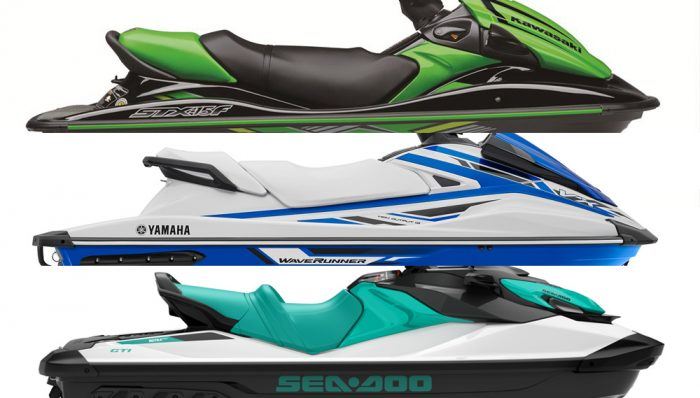
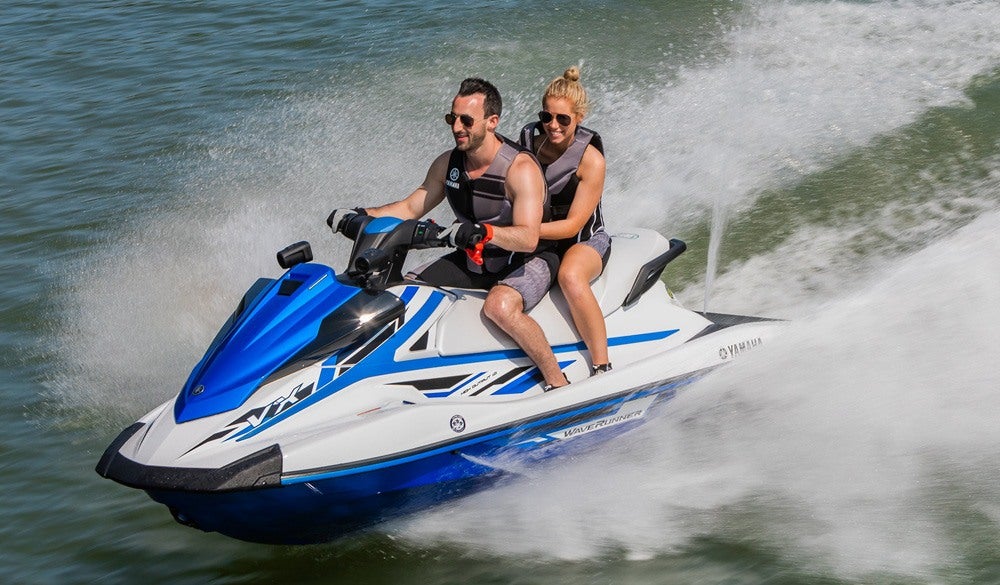
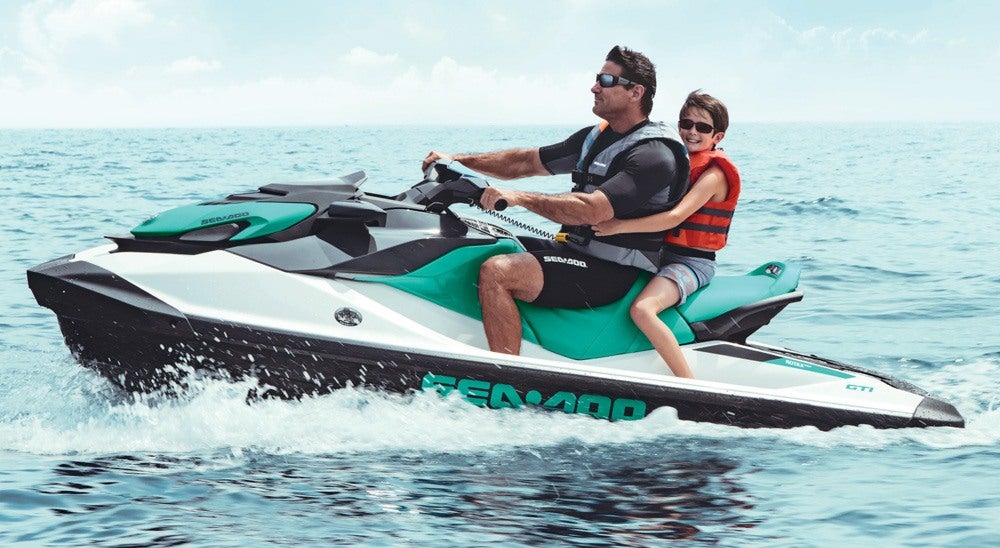

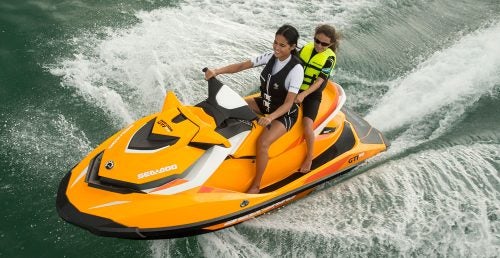







 Your Privacy Choices
Your Privacy Choices